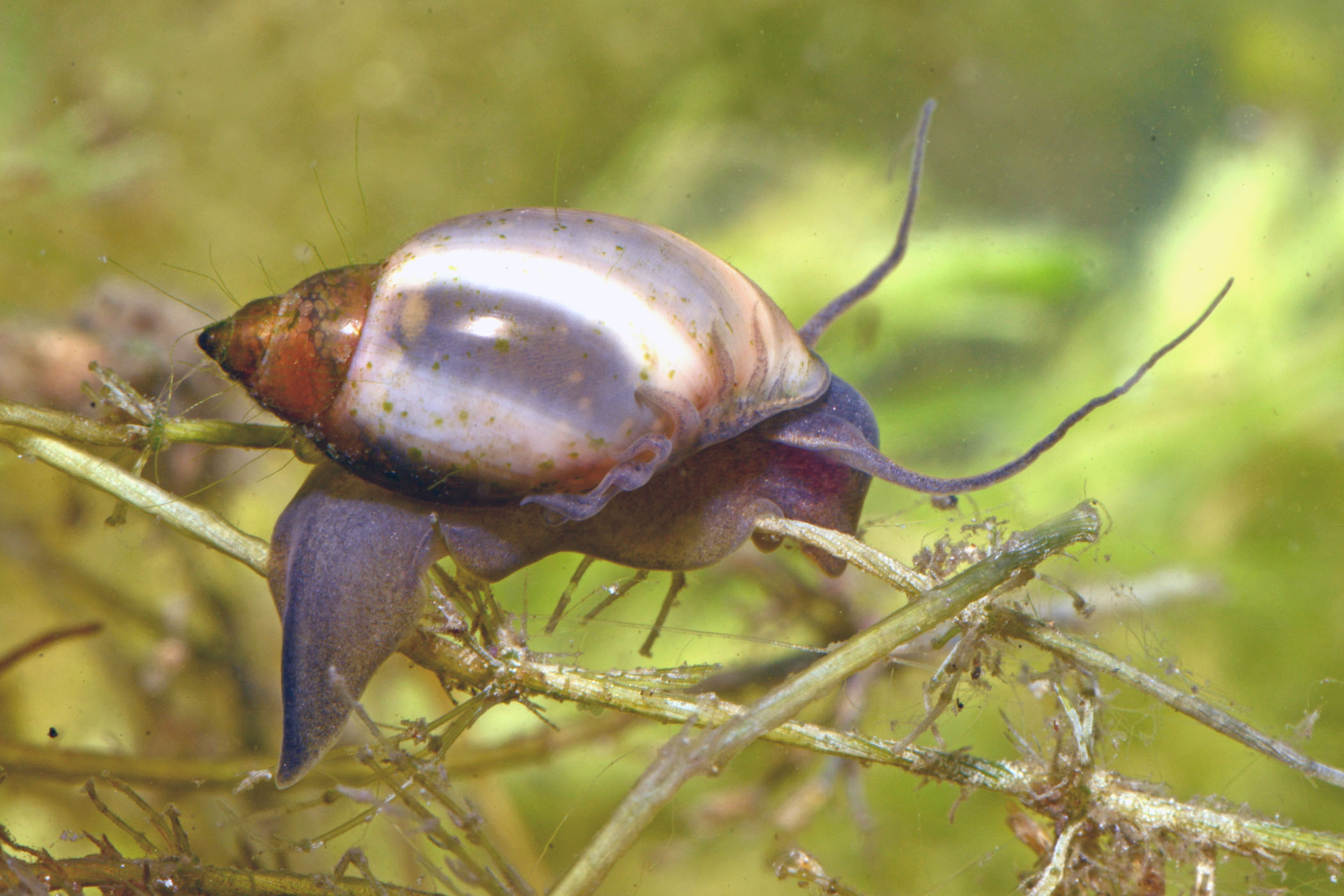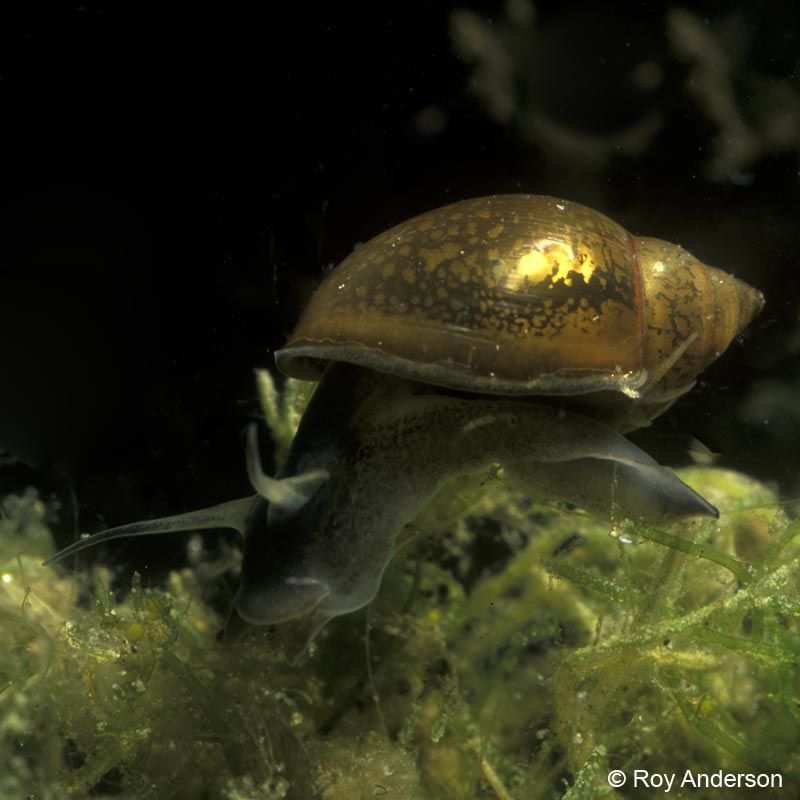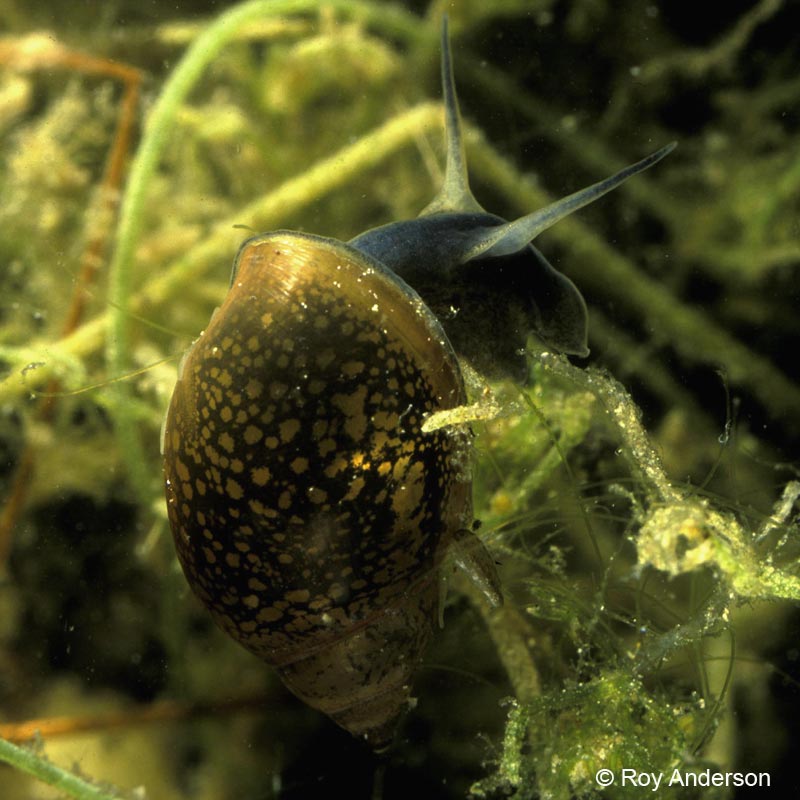| Mollusca : Gastropoda : incertae sedis : Physidae | Snails and slugs |
Physella acuta (Draparnaud, 1805)
Acute or lateritic bladder snail
 |
| Physella acuta |
Description: A small, sinistral and sharp-spired shell. The animal is grey to almost black but lacks the whitish spots typical of P. gyrina, the other introduction from North America. Both species are very variable but in general P. gyrina has a blunter spire with flatter whorls and shallower sutures whereas P. acuta has distinctly deeper sutures and a sharper spire. Widespread but still local though spreading rapidly since its discovery in Ireland in 2000. 9-14 mm.
World Distribution: Now regarded as a native of North America where it has been known under the name Physa heterostropha (Say, 1817), a name reduced to synonymy with acuta (Anderson, 2005). Recorded from most of Europe north to Germany and the British Isles. Introduced to Africa, Asia and Australia by human commerce.
Irish Distribution: Very common in both tropical and coldwater aquarium tanks and presumably now garden ponds. The first outdoor site to be identified in Ireland is Glastry Clay Pits near Cloughey in the Ards Peninsula, Co. Down. A substantial colony was discovered there on 19 February 2000 (Anderson, 2003). It has since been reported from the Grand and Royal Canals west of Dublin (Moorkens & Killeen, 2005), from a saltmarsh at Inch Island Lough Swilly (pers. comm. of G. A. Holyoak, 2002), from a tributary of the Shannon Estuary at Ballincurra, Limerick (Anderson, 2008) and from the Lagan Canal at Newforge, Belfast (Anderson, 2008). Still spreading.
Ecology:
- The familiar bladder snail of tropical aquaria is widespread outdoors in Britain and Europe in a range of (usually small) fresh and brackish-water habitats
- Very tolerant of organic pollution and eutrophication
- It also tolerates raised salinity and can occur in saltmarshes as the Lough Swilly record indicates
Key Identification Features:
- A small, sinistral and sharp spired shell - the familiar bladder snail of tropical aquaria
- Shell translucent and glossy but less fragile and slippery than the native Physa fontinalis
- Whorls moderately convex with fairly deep sutures
- Spire sharp
- Animal unspotted light to dark grey with the mantle covering very little of the shell and with fewer digitations than Physa fontinalis
Taxonomy:
- Formerly regarded as a European native (Draparnaud, 1805; Germain, 1930; Turner et al., 1998), but now accepted as an early introduction from North America (Anderson, 1996; Anderson, 2005). Morphometric analysis (Anderson, 2003) and breeding experiments plus comparison of rDNA (Dillon et al., 2002) using the N. American P. heterostropha and P. acuta from the Glastry locality mentioned above have confirmed that these two are synonymous. Physella heterostropha was formerly listed as a species distinct from acuta and both were said to occur in the British Isles. Physella acuta was probably introduced to Europe via the French cotton trade with Louisiana. It was described by Draparnaud from the River Garonne near Bordeaux, principal port of the cotton trade, in 1805.
Red list status:
- Not applicable.
Distribution Map from NBN: Physella acuta at National Biodiversity Network mapping facility, data for UK.
iNaturalist: Physella acuta at iNaturalist World Species Observations database.
GBIF data for Physella acuta | Classification: Gastropoda, incertae sedis, Physidae, Physella
Thumbnails for genus Physella
| Anderson, R., 2025. Physella acuta. (Draparnaud, 1805). [In] MolluscIreland. https://www2.habitas.org.uk/molluscireland/species.php?item=58. Accessed on 2025-04-01. |

